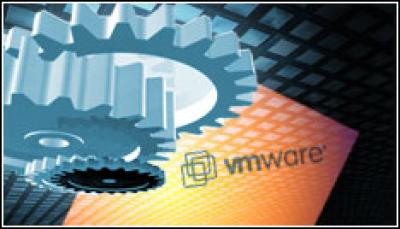VMware used the kickoff keynote speech at its annual VMworld 2010 conference in San Francisco to disclose its two latest acquisitions aimed at providing new technology to support its cloud computing infrastructure strategy.
The companies include Integrien, a developer of real-time data centre performance analytics and management software and TriCipher, a developer of cloud security software. VMware didn’t disclose the financial terms of the deal. Company officials said both deals will close in the 2010 third quarter and won’t have a material effect on VMware financial guidelines for the year.
VMware chief executive Paul Maritz, speaking at a post-keynote media conference, said VMware acquired the two companies for the value of their technologies to VMware cloud infrastructure plans, not for any significant increase to the parent company’s earnings.
vCenter integration
VMware intends to integrate Integrien’s data system performance management and analytics technology with its vCenter management products. Steve Herrod, VMware chief technology officer, said that the Integrien technology would help the company deliver a new level of automation and control to support virtualised and cloud infrastructures.
TriCipher’s security technology will support multiple initiatives of VMware’s cloud infrastructure, including identity based security, integration of hybrid clouds, and managed access to SAAS applications from any device at any time.
The acquisitions were tied into the main theme of VMworld 2010’s opening keynote on 31 August in which VMware officials say customers are increasingly ready to move to hybrid cloud IT infrastructures, which it defines as a combination of customers’ own private clouds and public Software as a Service cloud systems.
Rick Jackson, VMware chief marketing officer said the majority of VMware customers have passed through the first two phases in the adoption of virtualisation technology. The first phase was the virtualisation of “controlled assets”, the servers, storage drives and processors in the data centre. In the second phase they learned that applications run better in a virtualised environment, because “they are more reliable and they deliver a higher quality level of service”, Jackson said.
‘IT as a service’
Customers have learned that applications such as Microsoft Exchange, SharePoint and massive Oracle databases all run better under VMware virtualisation, said Jackson. Customers “are able to achieve high availability and put in place disaster recovery at a fraction of the previous cost” of implementation in a non-virtualised environment, he said.
The third phase will be to leverage the operational flexibility provided by virtualised data systems to implement “IT as a service”, which enables IT organisations to deliver applications and computing resources where, when and how it is needed by customers, Jackson said. The goal of IT as a service, Jackson said, is optimising IT production resources for business consumption so it can respond to evolving business needs rapidly, efficiently and at lower cost than the long established methods of delivering IT services internally.
 VMware introduced new and upgraded products to support this move to the hybrid cloud and IT as a Service. They include VMware vCloud Director, which allows IT departments to create virtual data centres with defined subsets of computing, network and storage resources configured for particular projects or applications. These virtual data centre services are delivered under defined management policies with specific service level agreements and pricing.
VMware introduced new and upgraded products to support this move to the hybrid cloud and IT as a Service. They include VMware vCloud Director, which allows IT departments to create virtual data centres with defined subsets of computing, network and storage resources configured for particular projects or applications. These virtual data centre services are delivered under defined management policies with specific service level agreements and pricing.
Pre-defined services
IT departments can offer entire catalogues of predefined virtual data centre services to enable customers, whether internal corporate departments or external customers to access the services through an automated self-service process.
Furthermore the services can be a combination of internal secure IT resources, custom corporate applications or SAAS applications on public cloud systems.
VMware also introduced three new vShield security products to support cloud infrastructure. These include vShield Edge, vShield App and vShield Endpoint. These products virtualise security and network edge services, such as firewalls, Virtual Private Networks, and load balancing services. These virtual security and management services are designed to free security from the physical data centre infrastructure through a flexible and programmable interface.
VMware vCloud Datacenter Services was developed to enable enterprises to link their data centres to external cloud systems while preserving security and maintaining service quality standards. The vCloud Datacenter services supports hybrid private-public cloud services by working with major service providers including Verizon, Bluelock, SingTel, Colt, and Terremark.
With vCloud Datacenter Services, enterprises can move computing workloads back and forth between internal virtualised systems to public cloud services by applying consistent infrastructure, security and management models.




